Azure Virtual Machines are one of the computing services offered by Azure, it provides flexibility and agility, enabling organizations to swiftly deploy and scale applications without investing in and maintaining on-premises hardware. Azure VMs are fundamental in creating and managing the Azure cloud infrastructure.
The concept of Azure VM rightsizing involves choosing the most suitable VM size for your workloads based on the resource requirements. The goal is to optimize performance and cost by aligning the VM size with the actual needs of your applications.
What is Azure VM rightsizing?
Azure VM rightsizing is optimizing the size of your Azure Virtual Machines to better align with the actual resource requirements of your workloads. It is a crucial practice for several reasons, primarily to balance performance and cost efficiency. Here are some of the key reasons.
- Cost Optimization – Different Azure VM sizes incur varying costs. Rightsizing allows you to select VM configurations that match the actual resource requirements of your workloads, preventing unnecessary expenses associated with over-provisioning.
- Resource Efficiency – Rightsizing ensures efficient resource utilization by allocating the appropriate amount of CPU, memory, and storage resources. This practice prevents wasted capacity and encourages optimal utilization.
- Performance Optimization – VMs appropriately sized for your workloads ensure peak performance. Overprovisioned VMs might need to utilize resources more efficiently, while under-provisioned VMs can lead to performance bottlenecks.
- Scalability – Properly sized VMs make it easier to scale your infrastructure based on demand. Whether you’re considering vertical scaling (resizing VMs) or horizontal scaling (adding more VM instances), rightsizing fosters a flexible and scalable environment.
- Cost-Effective Resource Utilization – Azure VMs are billed based on the resources allocated to them. Rightsizing ensures you only pay for the required resources, promoting a cost-effective strategy for utilizing cloud resources.
Read more: Proven Azure cost optimization techniques to reduce cost
6 Best Azure VM rightsizing strategies
Optimizing Virtual Machine (VM) sizes for cost and performance in cloud environments like Azure is crucial for efficient resource utilization. Here are some tips and methods for optimizing VM sizes:
- Regularly Monitor Resource Utilization – Employ monitoring tools to observe the utilization of CPU, memory, and storage in your VMs over time. Identify patterns and fluctuations in resource usage to make informed decisions.
- Analyze Azure Cost Management and Billing Data – Take advantage of Azure Cost Management and Billing tools to better understand your spending patterns. Examine cost breakdowns and pinpoint areas where rightsizing can result in cost reductions.
- Understand Application Workloads – Evaluate your applications’ resource needs by comprehending each workload’s CPU, memory, and storage requirements. Select VM sizes that align with these specific needs.
- Use Azure Monitor and Metrics – Leverage Azure Monitor for instantaneous insights into your VMs’ performance. Use metrics and alerts to handle performance concerns and identify opportunities for Optimization proactively.
- Implement Vertical Scaling – Modify VM sizes vertically according to your workload demands. Increase or decrease the number of vCPUs and memory to align with the evolving requirements of your applications.
- Consider Horizontal Scaling – Leverage Azure Virtual Machine Scale Sets to implement horizontal scaling. This enables you to dynamically adjust the number of VM instances based on demand, offering flexibility and scalability.
By combining these strategies and staying vigilant about the changing needs of your applications, you can optimize VM sizes in Azure for both cost efficiency and performance, ensuring that you get the most value from your Azure resources.
How to rightsize Azure VMs using native tool?
Azure provides native tools and services that can assist you in rightsizing Virtual Machines (VMs).
Azure Advisor
Navigate to Azure Advisor in the Azure portal. Look for recommendations related to VM sizes. It provides insights into underutilized or overprovisioned VMs and suggests appropriate VM sizes.
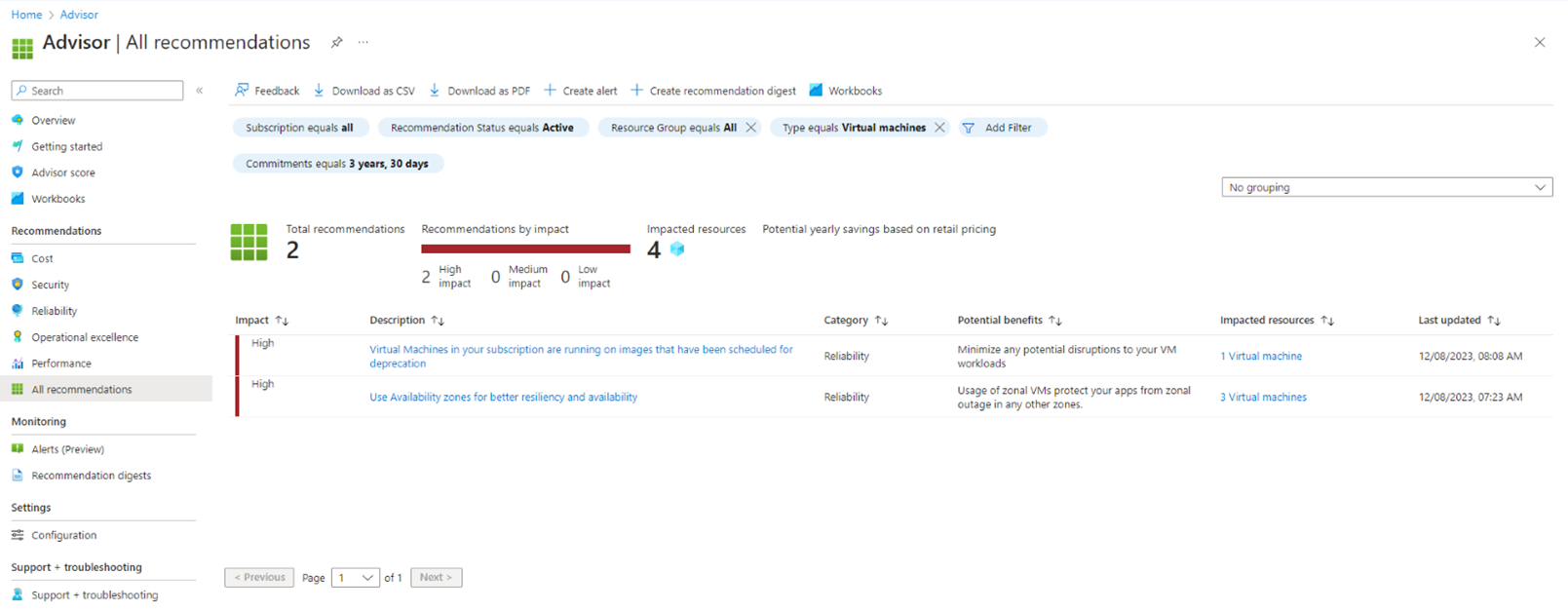
Select “Cost” within the Recommendations tab to see specific recommendations related to cost optimization, including rightsizing VMs.
Additionally, you can navigate to the Configuration tab to configure a filter for each subscription, allowing you to display recommendations for VMs with specific CPU utilization exclusively.
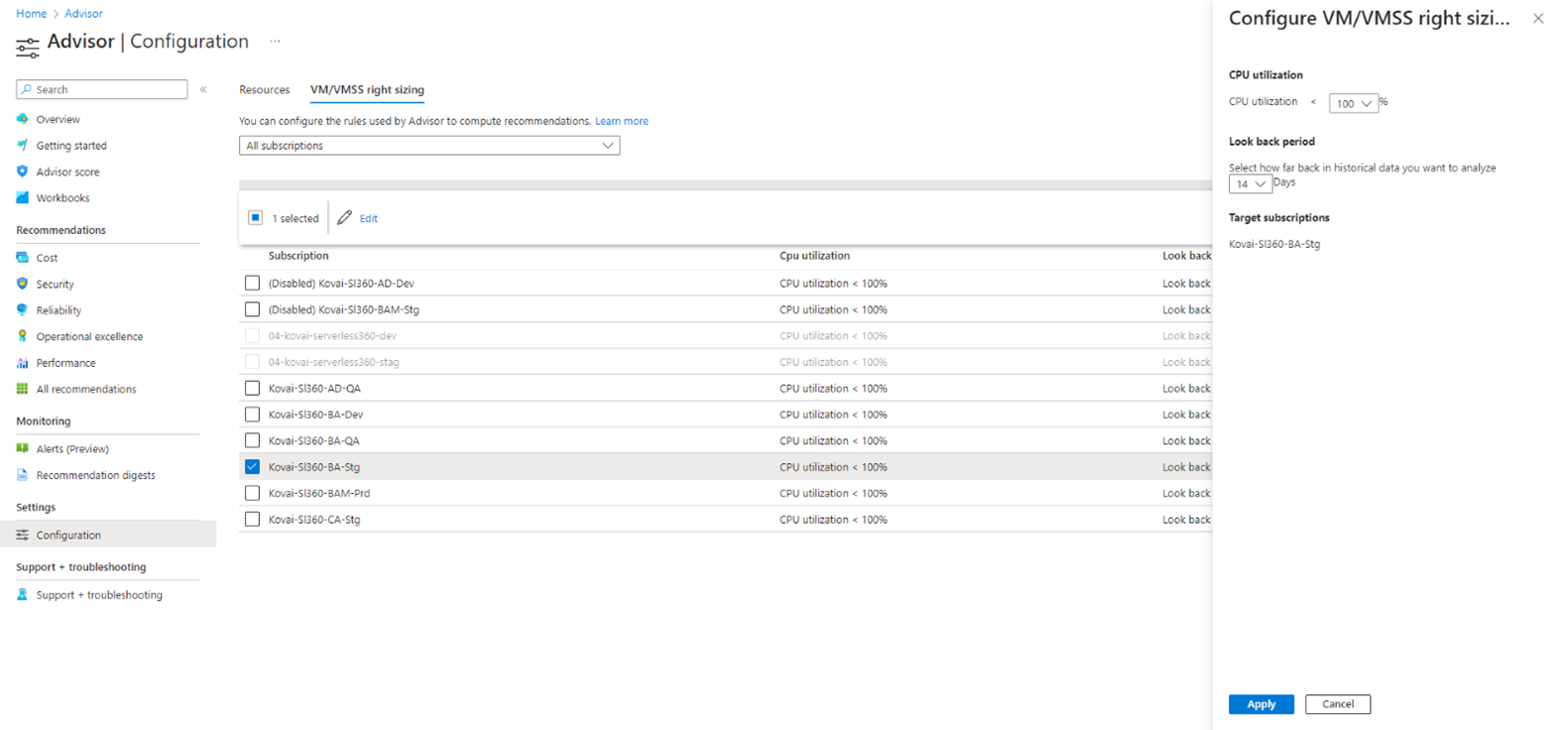
Stay informed about new recommendations and respond promptly by configuring alerts.
Azure Monitor
Navigate to the Monitor section within the Azure portal and choose the scope that includes Virtual machines. Explore the performance metrics of your VMs within the Metrics section. Select relevant metrics such as CPU percentage to analyze historical performance data and identify patterns and variations in resource utilization.
Look for consistently high or low usage, indicating potential overprovisioning or underutilization. Also, set up Azure Alerts based on specific performance thresholds.
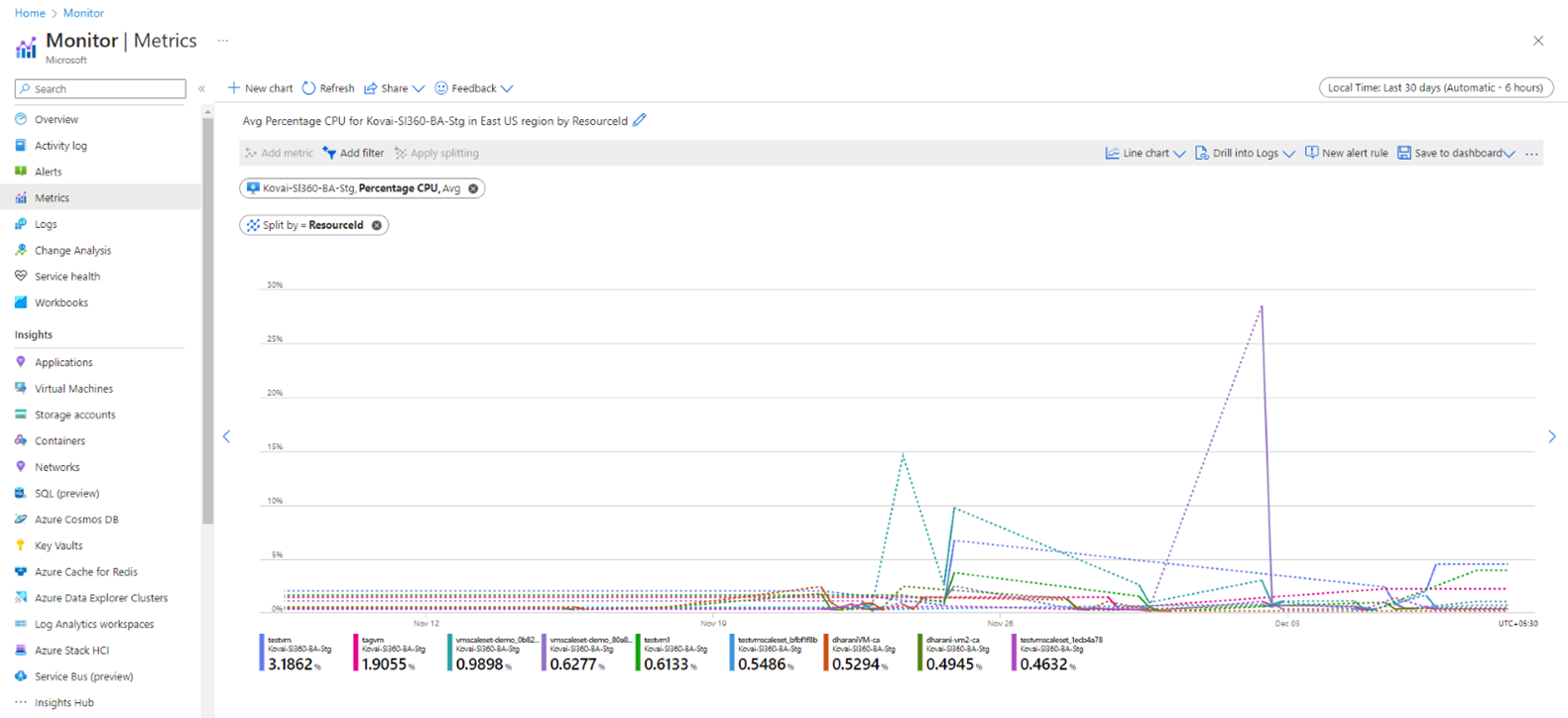
Based on the recommendations and analysis, please navigate to the respective VM and modify its size.
Challenges faced while using native tool for Azure VM rightsizing
Azure native tools come with following challenges while rightsizing VMs.
- While the Azure portal offers recommendations via Advisor, implementing these suggestions often involves manual effort to resize the relevant VM.
- Azure lacks precise recommendations regarding the optimal size for a given resource.
- Analyzing resource patterns for each VM and subsequently rightsizing them based on this analysis can be cumbersome.
- Additionally, Azure imposes limitations when examining metrics by allowing selections for only one resource type and location, requiring a refined scope.
- Moreover, there is no straightforward method to determine the total cost savings achieved by rightsizing VMs without delving into the size configuration tab of each VM.
Right-size your VMs for maximum efficiency with Turbo360
The Turbo360’s Cost Analyzer offers a comprehensive solution, offering diverse functionalities associated with cost management. It delivers thorough Azure cost analysis across tenants, subscriptions, environments, and teams, providing users with essential expenditure insights. It includes the following capabilities.
Explore Azure costs with customizable reporting
In the Cost Analyzer’s analysis section, you can examine and delve into actual and amortized costs across various Azure subscriptions. It delivers customizable cost reports. Additionally, you can drill down to the specific VM you’re interested in, providing insights into the cost breakdown.
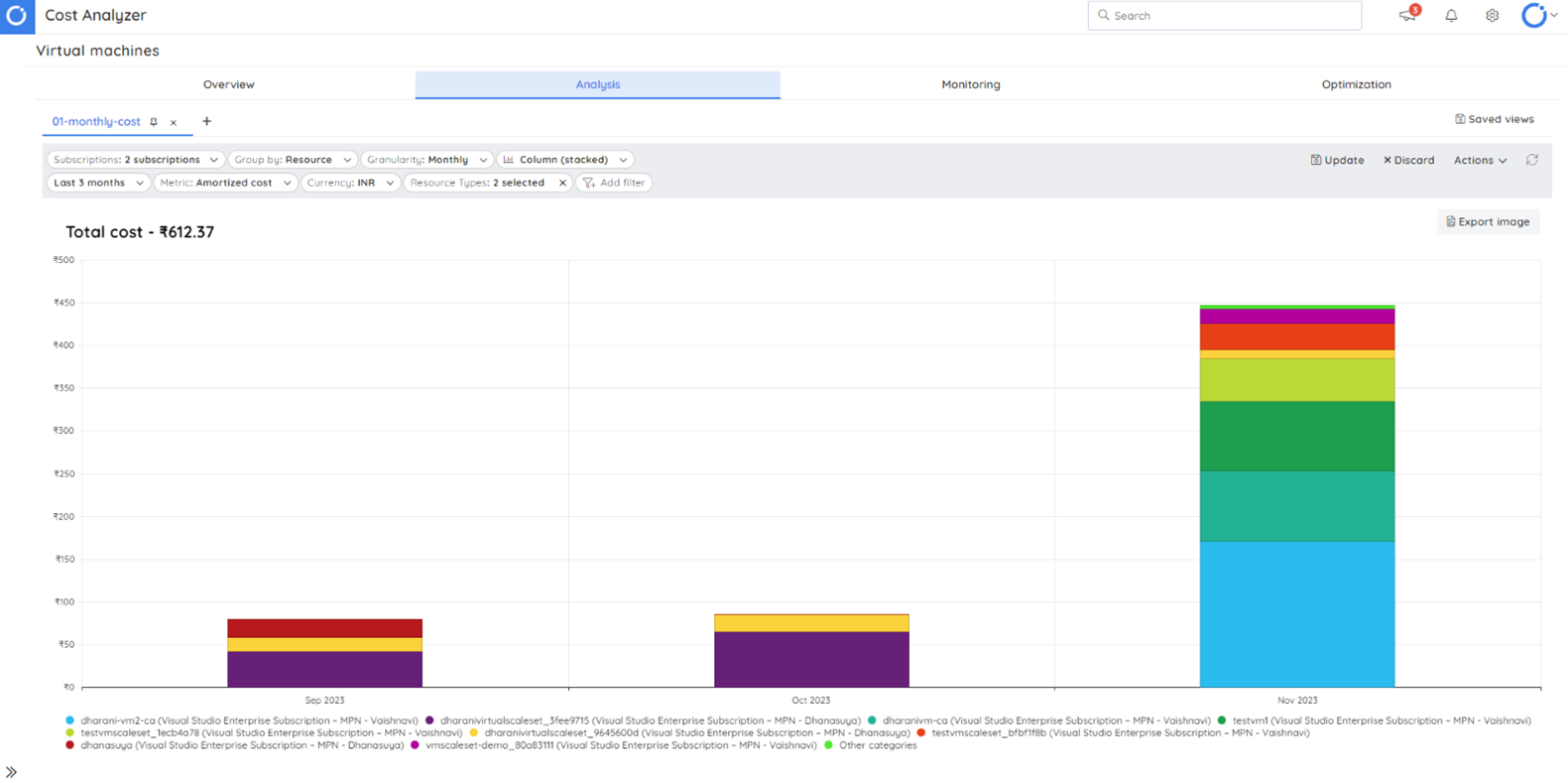
Identify potential spikes in Azure cost using cost monitoring and alerts
Create monitors and stay informed about the expenses associated with your VMs and other resources, receiving notifications whenever your cost exceeds a predefined budget.
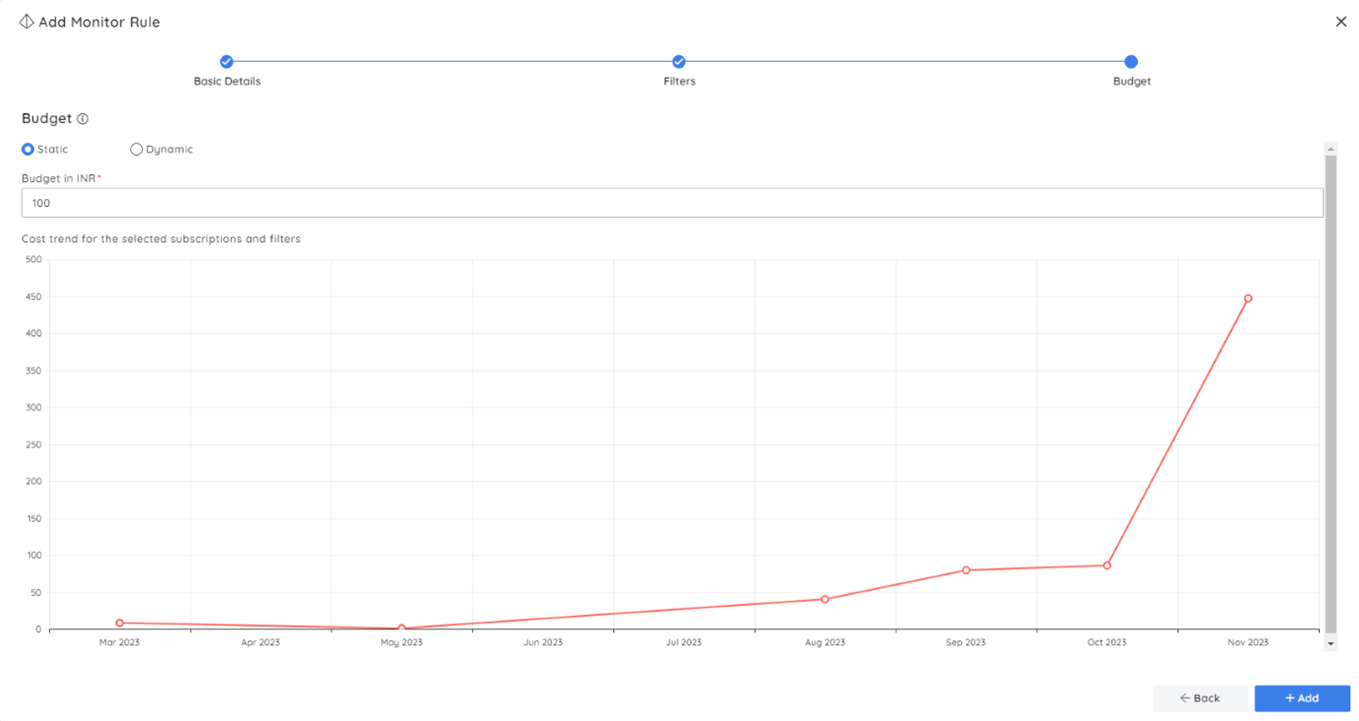
Effective cost optimization strategies to scale VMs
The Optimization feature in Cost Analyzer lets you avoid unnecessary expenses from your VMs by creating schedules and defining specific up and down hours for scaling the VMs and other associated resources.
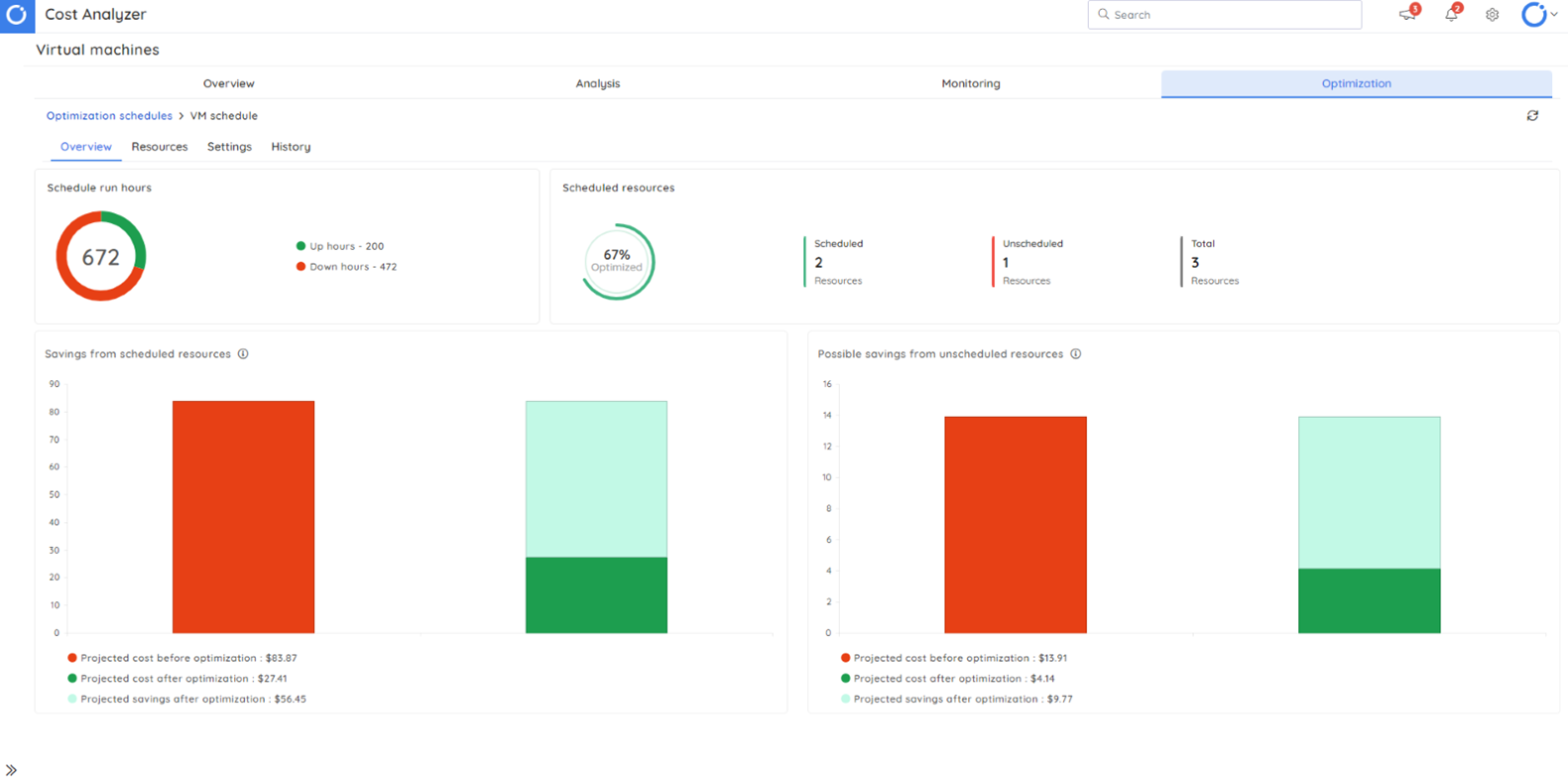
Rightsizing capabilities for optimal resource utilization and cost savings
Rightsizing capability in Turbo360’s Cost Analyzer refers to optimizing the size of computing resources, such as virtual machines (VMs), to match the actual needs and usage patterns of an application or workload.
With rightsizing, users can examine resource consumption patterns across different subscriptions and mitigate several drawbacks in Azure. Cost Analyzer offers accurate recommendations, suggesting whether to upgrade a resource to a higher service tier or downgrade it to a lower one. This includes providing the recommended tier and allowing users to perform the rightsizing directly from the platform.
Additionally, users can view recommendations for multiple resources across subscriptions in a consolidated view. The platform provides insights into potential cost savings even before initiating the rightsizing process for the respective VM tier.
Navigate to Turbo360’s Cost Analyzer. Create a dedicated Cost Management group specifically for your Virtual Machines, then proceed to the Rightsizing section under Optimization. Here, you will find recommendations and optimized costs for all your VMs.
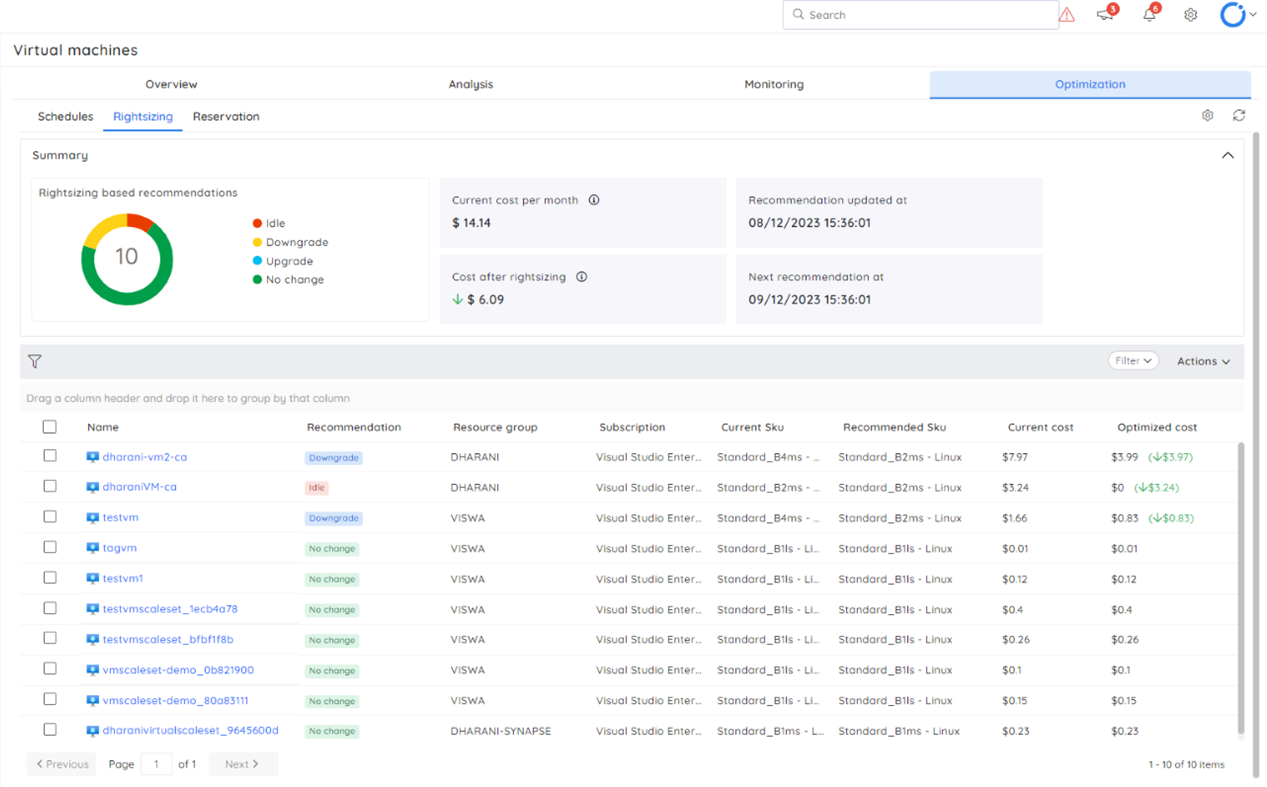
Select the corresponding VM to either downgrade or upgrade. Analyze the resource utilization and resize it to the recommended size directly, eliminating the need to navigate to Azure.
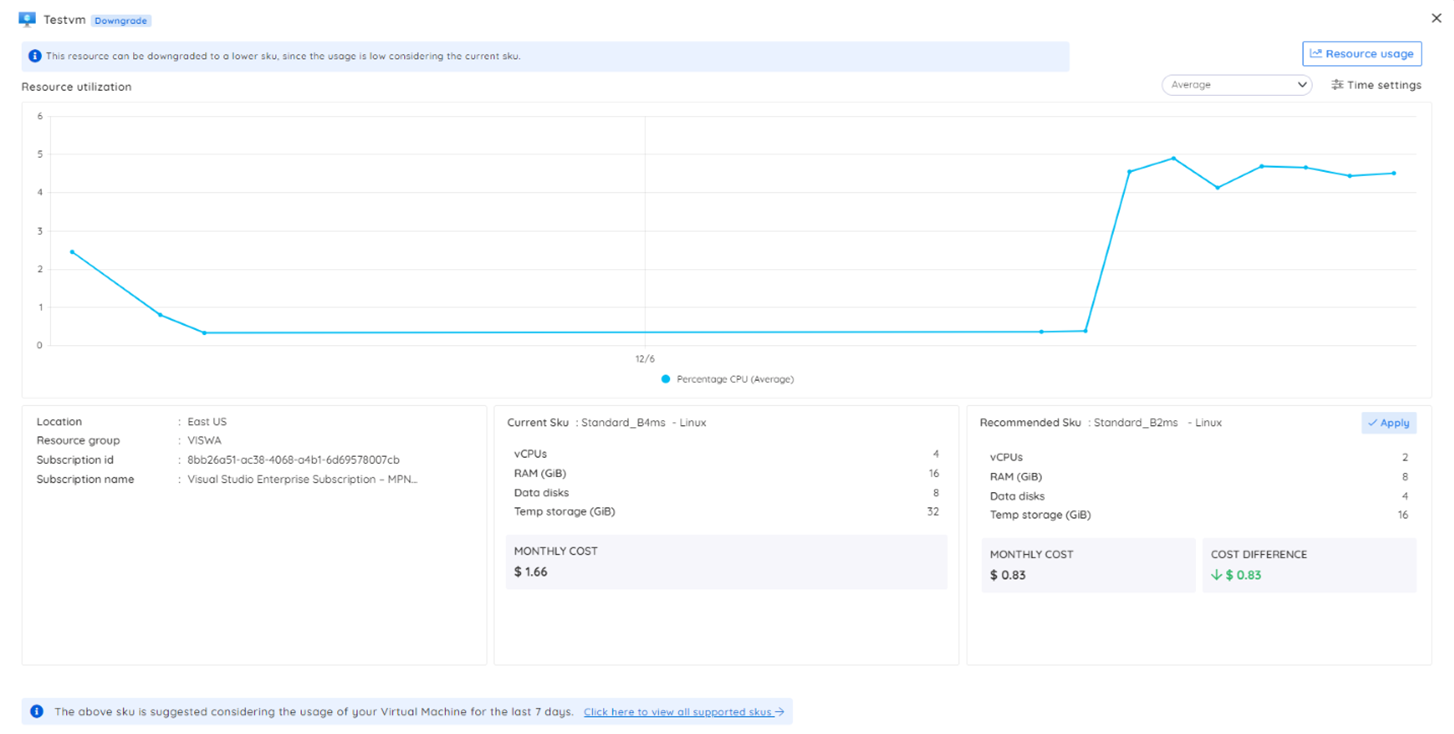
Review your recommendations frequently to size your VMs correctly and reduce unnecessary cost expenditures.
Azure VM Rightsizing in Action
Consider an e-commerce organization responsible for hosting and managing an online platform. To ensure the availability, performance, and flexibility of their online services, they utilize Azure virtual machines (VMs).
A challenge arises upon identifying certain VMs with minimal activity incurring substantial charges: a centralized solution to deliver recommendations based on sizes for all VMs and efficiently size them based on resource utilization.
Turbo360’s rightsizing feature comes into play here. The organization got recommendations for all deployed VMs in their subscriptions, facilitating a seamless rightsizing process to align them with the recommended tier according to their workloads. Subsequently, they observed significant cost savings in their billing, attributed to the effectiveness of Turbo360’s rightsizing capabilities.
It also functions as an Azure VM monitoring tool, offering a comprehensive solution for monitoring the health and performance of Azure VMs and other resources in a single platform.
Conclusion
Azure VM rightsizing is crucial for achieving a more cost-efficient and optimized infrastructure, ensuring efficient usage and payment only for essential resources. This practice enhances both performance and cost-effectiveness by ensuring that the allocated resources match the requirements of your application’s workloads. Leverage Turbo360’s rightsizing capabilities for a seamless and effortless process of rightsizing and optimizing your VMs and other Azure resources.











